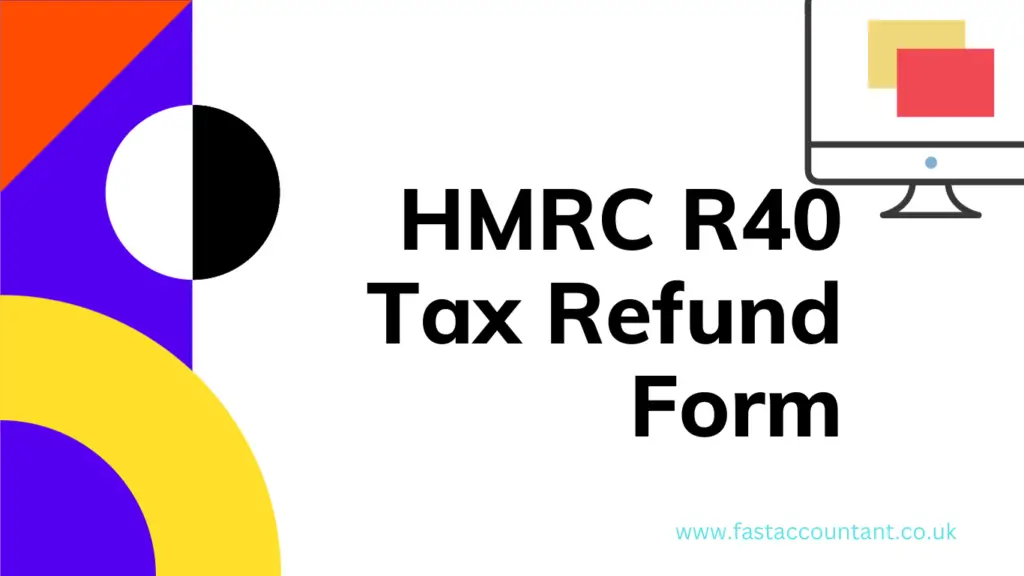
In this article, you will gain a comprehensive understanding of the HMRC R40 Tax Refund Form. This form is designed to assist individuals in reclaiming tax deductions from savings and investments to which they may be entitled. From exploring the eligibility criteria to the step-by-step process of completing the form, this article aims to provide you with a clear and concise guide to navigating the R40 Tax Form. By the end, you will be equipped with the knowledge and confidence to submit your claim accurately and efficiently, ensuring the maximization of your tax refund.
R40 Tax Form
Overview
The R40 tax form is a document used to claim a tax refund or tax overpayment from HM Revenue and Customs (HMRC) in the United Kingdom. It provides individuals with a way to reclaim any excess tax they may have paid or to claim a refund on tax deducted from their pension. Filling out the R40 form accurately and providing the necessary documents is crucial to ensure a successful claim.
Eligibility Criteria
Not all individuals are eligible to use the HMRC R40 tax refund form. The form is primarily designed for individuals who have the right to claim a tax refund or tax overpayment but are not required to complete a self assessment tax return. Those who have received taxed income in the UK or have had tax deducted from their pension are eligible to use this form. Additionally, individuals who want to claim a tax refund on PPI tax deductions are also eligible.
Documents Required
To complete the HMRC R40 tax refund form, you will need to gather information from certain documents. These documents include proof of income, such as P60, P45, bank statements and interest certificates, pension statements, and any other relevant documents that support your claim. It is essential to ensure that the documents you use are accurate to avoid any complications with your claim.
Filling Out the Form
Completing the R40 tax form in order to apply for a repayment requires attention to detail and careful consideration of the information provided. To ensure accuracy, it is crucial to follow the guidelines provided and gather all the necessary information before beginning the process. Additionally, it is important to accurately calculate your tax refund or tax overpayment to avoid any discrepancies.
Section A: Personal Information
In Section A of the R40 tax form, you will be required to provide your personal information. This includes your full name, date of birth, contact details, National Insurance Number (NINO), and the tax year for which you are making the claim. It is essential to double-check the accuracy of the information provided to avoid any delays or complications with your claim.
Section B: Employment Information
Section B of the HMRC R40 tax form focuses on your employment details. You will need to provide information about your employer, including their name, address, and PAYE reference. Providing accurate and up-to-date employer information is crucial for the claim for repayment of tax.
Section C: Income Information
In Section C of the R40 tax refund form, you will need to provide details about your taxable income. This includes information about any income that has been subject to tax, such as wages, dividends, or rental income. You will also need to provide details of any other taxable income that may not have been subject to tax deductions. Accurately reporting your income is crucial for calculating your tax refund or tax overpayment.
Section D: Deductions and Allowances
Section D of the R40 claim form focuses on deductions and allowances. This section allows you to claim any personal allowances you may be entitled to, such as the Personal Allowance or Marriage Allowance. Additionally, you can claim other deductions and allowances that apply to your specific circumstances. It is important to have a clear understanding of the deductions and allowances you are eligible for to maximize your claim.
Section E: Repayment instructions
It is important for HMRC to know how you want your repayment made. Here you have two options. Option one is to send a cheque to your address. Option two is to send the cheque to your nominee which can be your accountant or tax adviser.
Section F: Declaration and Signature
In the final section of the R40 tax form, you will need to declare the accuracy of the information provided. It is essential to carefully read and understand the declaration before signing and dating the form. By signing the form, you are confirming that the information provided is true and accurate to the best of your knowledge.
In conclusion, the R40 tax form is a valuable tool for individuals looking to claim a tax refund or tax overpayment from HM Revenue and Customs. By understanding the eligibility criteria, gathering the necessary documents, and accurately completing each section of the form, you can ensure a smooth and successful claim process. It is crucial to pay close attention to the details and provide accurate information to avoid any delays or complications with your claim.
